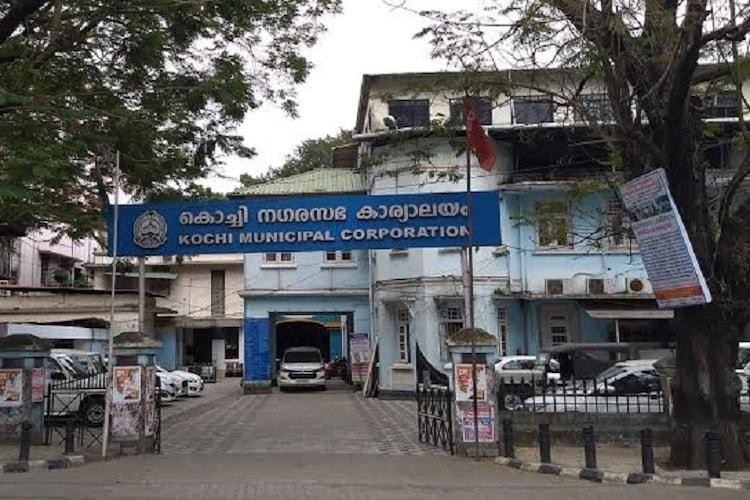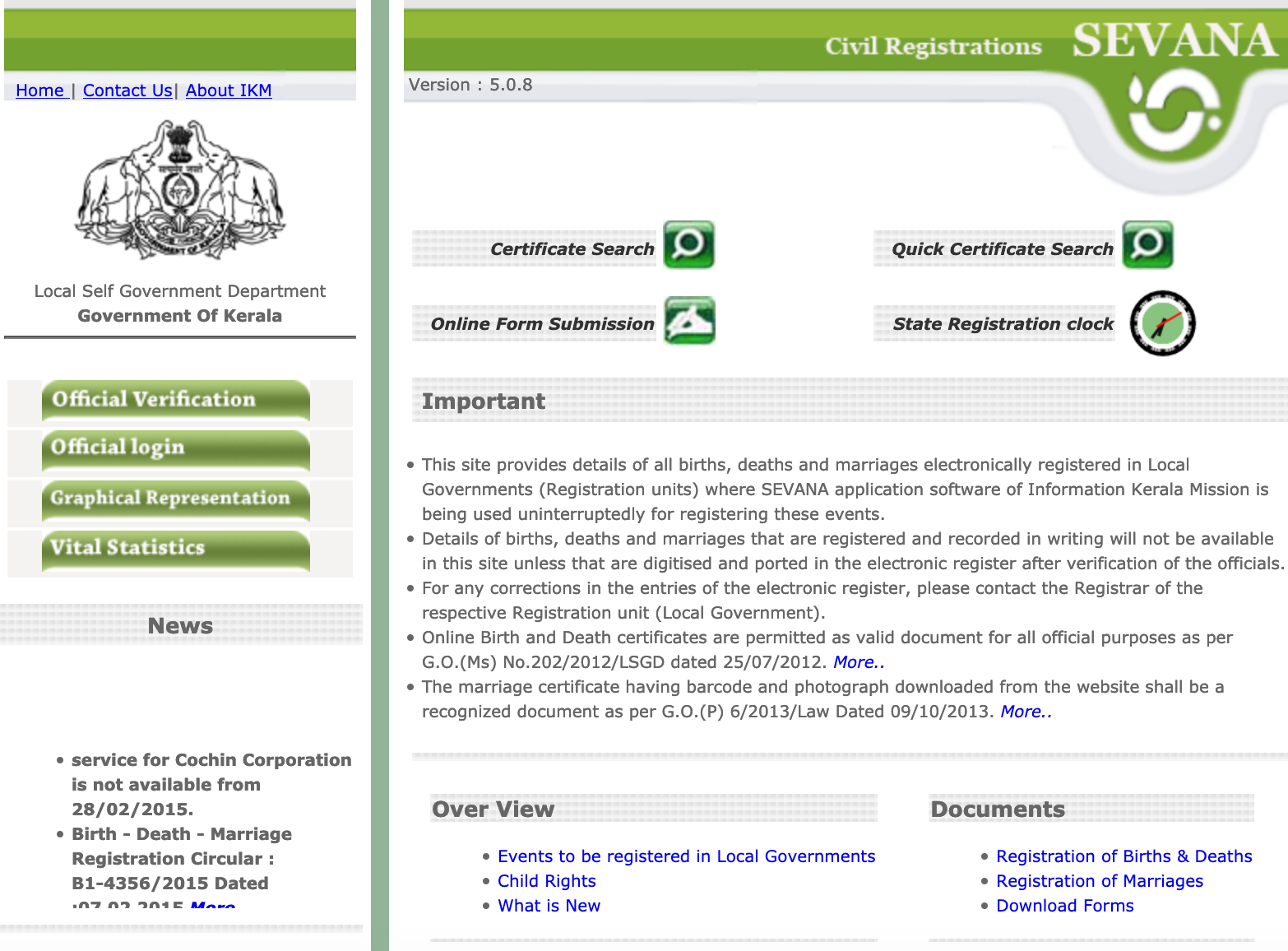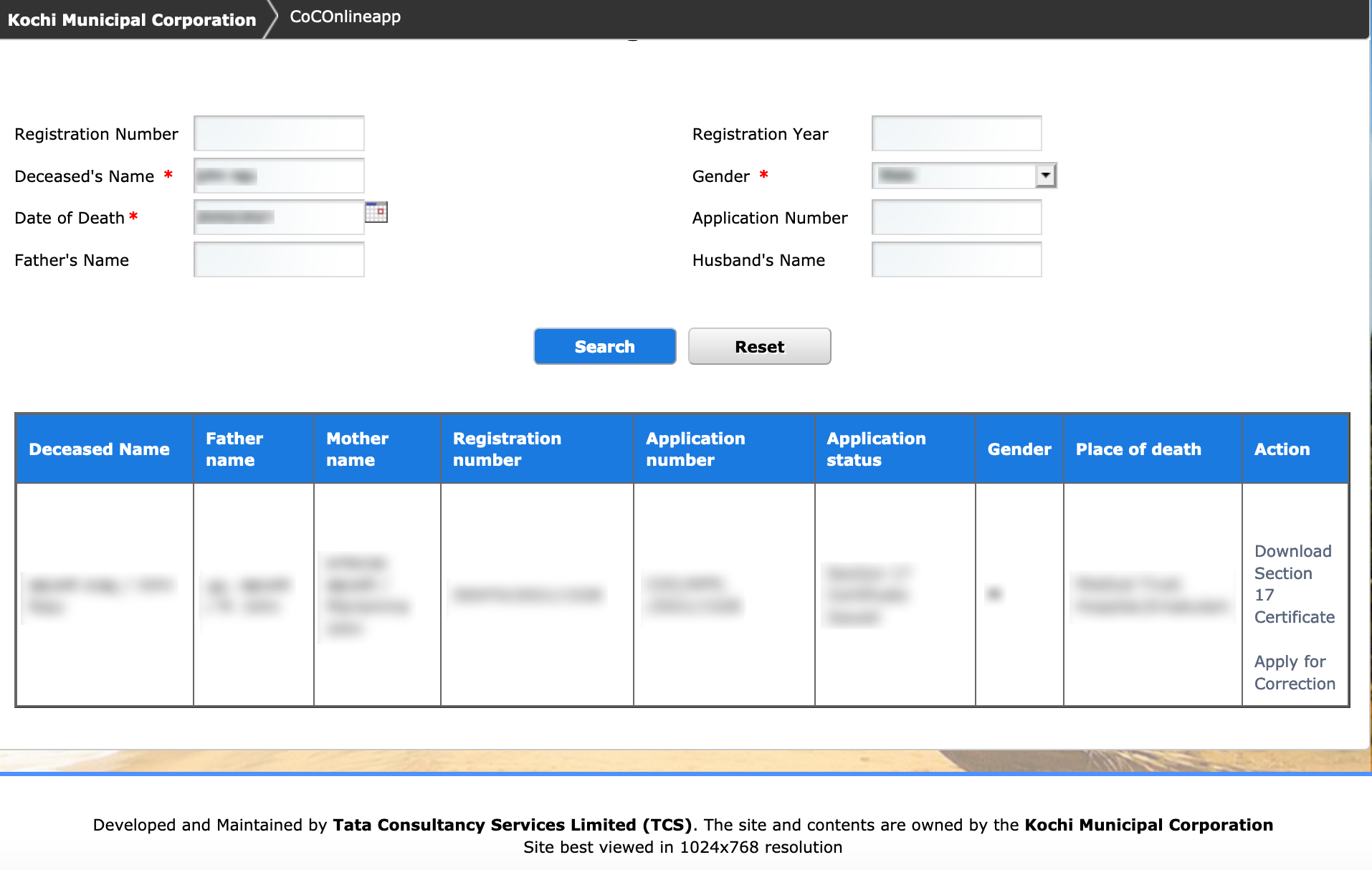
In 2011, Kochi Corporation initiated a digital transformation project that they planned to commission in 54 months. As part of an e‑governance mission, some 22 modules that included birth, death, and marriage certificates, were to be digitized allowing for residents to apply and receive these documents online, without requiring them to visit the corporation offices. The project was won by Tata Consultancy Services (TCS) which put a bid of about ₹5 lakhs per month based on the costs of three software engineers who would be stationed on-site working closely with the corporation in its digitalization efforts. As with many other local government initiatives, good intentions alone rarely compensate for lack of oversight.
In 2019, Kochi Corporation realized that they had paid ₹4.94 crores to TCS over the years. An audit was initiated and a Kerala state government technical team was brought in to assess the status of the project. It was found that most of the 22 modules had not been implemented. Of the modules that TCS claimed had been completed, which included the birth, death, and marriage modules, it was found that they were incomplete and prone to errors. TCS on its part blamed the status on the technical incompetence of Kochi Corporation and claimed that they had provided resources and services worth over ₹5 crores and were still owed money.
In February 2021, my father passed away at Medical Trust Hospital in Kochi and we needed to apply for a death certificate. Having never lived in Kerala and not being familiar with the process, I started with an online search.

My first search led me to the Government of Kerala’s Sevana website.
There are three things highlighted on this website that are of interest.
- Service for Kochi Corporation is not available from February 28, 2015.
- The Sevana Civil Registration Software won the Kerala state e-governance Award 2009 (Category — Citizen Services).
- Online birth and death certificates are permitted as valid documents for all official purposes (as per a government notification dated July 25, 2012).
February 28, 2015 can be assumed to be the cut-off date when the Kochi Corporation migrated the services to the TCS solution. The question though that needs to be asked is, if the Sevana software won a category award in 2009, what prompted Kochi Corporation to forge its own path in 2011 and award the contract to TCS?
The notification dated July 25, 2012 clearly states that birth and death certificates downloaded online are valid documents and don’t require seals, signatures, or stamp papers to make it official.
My next search lead me to the Kochi Corporation website. The message on the website is enough to scare most users away.
 I ignored the warnings and entered the site, where you learn the following.
I ignored the warnings and entered the site, where you learn the following.
- It has an SSL certificate that expired in March 2020 and has not been renewed since.
- The footer mentions that this site is developed and maintained by Tata Consultancy Services Limited (TCS).
- Death Certificate is one of the services available on the site.
 Getting the Death Certificate
Getting the Death Certificate
I started with the Death Registration Search form. I entered the details of my father, and the system responded with “No Data Found”. At this point, we assumed that the site was not functional especially given the fact that the SSL certificate had expired. We gave up on the online process and started exploring the offline process. After making some calls about the process, here are the steps that we went through.
- Make a trip to the hospital to verify the details on the hospital death registration form.
- Make a trip to the District Court and wait in line to buy eight ₹50 revenue stamp papers (Why eight? That number seemed to be the consensus of everyone that we asked.) and four ₹5 court fee stamps from a revenue stamp vendor. Write your name and address on each stamp paper.
- Make a trip to the Kochi Corporation office, and fill out a form requesting for death certificate copies and glue the four ₹5 stamps to it. We arrived a little after 1pm and came to know that all counters are closed between 1pm – 2pm for an office-wide lunch break. At 2pm when the counter re-opened, we learnt that they had not received the information from the hospital.
- A second trip to the hospital to confirm when they would send the details.
- A few days later, a second trip to the Corporation office to submit the form and the stamp papers.
- A week later, a third trip to the Corporation office to collect the death certificates on stamped paper.
The only times that we had to wait in a queue was at the revenue stamp vendor at the District Court and the very first time that we visited the Corporation office (we did not realize that the customer facing counters would be shut between 1pm – 2pm). Otherwise, if you discount the fact that there is no parking in most of these places and you have to walk quite a distance from where you park, the process was fairly efficient and the people were helpful.
Kochi was among the first set of cities to be awarded the ‘Smart City’ tag and the associated financing. A Smart City is one that embraces digital technologies to manage city resources efficiently, deliver citizen services faster, and provides for transparency in governance that allows for citizen and private enterprise driven initiatives that improve the ease of living for its citizens and visitors. However, in the specific case of getting a death certificate, every other city and municipality in Kerala appears to be better served through the Sevana website, where you can get a death certificate without an in-person visit to any office.
The HTML Form that cost ₹5 crores
A few days after first trying out the Kochi Corporation Death Registration Search form, I checked out the form again and realized that it actually worked. Once I entered my father’s details, it pulled his record out with the correct information and a few days later, it did give me an option to download the death certificate. Was the trips to the District Court and the Corporation office, the hunt for parking, the waiting in queues, and the money that we had spent unnecessary? Were we just too hasty?
One measure of the success of a city’s digital transformation is the rate of citizen adoption and the drop in in-person visits to the corporation office for civil services. A city resident will adopt an e‑service if it is accessible, intuitive, and inclusive.
Is the service accessible?
Accessibility is about the ease with which someone can find the appropriate city service and then engage with it. Not one person that we asked was aware of the service. Even if someone did a search and found the Corporation’s website, the expired SSL certificate would have stopped them from continuing. It is a given that over 90% of users don’t continue after getting an SSL expiry warning in the browser. In addition, the majority of users today access these services using a mobile device and the form has not been designed to be responsive and does not render properly on mobile devices.
Accessibility Score: 1/10
Is the service intuitive?
Intuitiveness is about the ease with which someone is able to navigate the form and complete their task. Three fields on the form have a red asterisk next to them. A web savvy person will understand that the red asterisk indicates a required field. Most won’t. If only three fields are required, why show the other fields in a search form? Registration and Application numbers can be assumed to be unique – then why group them with the three required fields? The Date of Death is a required field and already includes the year, then isn’t asking for the Registration Year redundant?
In addition to the structural issues, there are basic terminology and labeling issues. There is a field Husband’s Name, which is there irrespective of the gender that you select. Wouldn’t it make more sense to re‑label that as Spouse’s Name? In any case, the hospital death registration form did not ask for a spouse’s name and makes this field completely unnecessary.
Once the death certificate is available for download, the Action column provides a link labeled – Download Section 17 Certificate. Section 17 in the India Registration Act, 1908 refers to documents for which registration is compulsory – these include death, birth, and marriages. How many know this? Wouldn’t it have been much more intuitive to label the link – Download Death Certificate?
Intuitiveness Score: 1/10
Is the service inclusive?
Inclusiveness is about catering to the specific demographics that the service is meant for. The primary language spoken in Kerala is Malayalam. Most of the paper forms that you fill are in Malayalam with the translations provided in English. The hospital death registration form requires you to provide information in both Malayalam and English. A web service that is not localized for Malayalam does leave out a lot of users.
Inclusiveness Score: 4/10
That is a score of 6/30. This is a form built by TCS. The score has nothing to do with the technical incompetence of the Kochi Corporation as alleged by TCS. It has everything to do with TCS’s complete lack of understanding of the users who were meant to use these services.
User-Centered Design vs. Developer-Driven Design
User-Centered Design involves the users in the product design from start to finish. To create a form and workflow that works, designers have to truly understand the users, the mental models that they use and their pain points. A person who is applying for a death certificate has gone through a trauma and the process should not add to the trauma.
This issue is not limited to government portals. While doing the run-around, I had to withdraw some money from an ICICI bank ATM. After entering my PIN, it gave me two options to withdraw money from – “Your Current Account” or “Your Savings Account”. Not having used the account for over a year, I selected “Current Account” and the ATM returned my card with the message “Invalid Account”. I had to repeat the process and this time I selected “Savings Account” and I could get my money out. Is it really so hard for a developer to check the accounts that I have and only show me those options?
Evidence of developer-driven design was there in almost all the web forms that I tried out, including the Air Suvidha, Jagratha, Cowin, and even the Sevana web application. For administrative purposes, cities and rural areas in India are subdivided into taluks/tehsils and blocks/wards. Most citizens will not have any idea about the taluk or block that they belong to. What they know is their address, which almost never includes the taluk or block. All these web applications, without exception, required a user to enter their taluk or block, and in some cases it was a required field. India has one of the best digital infrastructure software stacks, which provides a spectrum of core infrastructure APIs and micro-services. Is it really so hard for a developer to ask a user to enter their address, and then use a reverse geocode service and auto-fill the taluk or block in the forms?
A solution designed without the user in mind escalates downstream costs. An ATM transaction that has to be repeated not only increases personal frustration, it also increases average wait times, results in longer queues, and will soon enough cascade into customer dissatisfaction and churn.
You’ve got to start with the Customer Experience and work backward to the technology—Steve Jobs, 1997
Tata Consultancy Services is a multi billion-dollar company. They placed the entire blame on the technical incompetence of Kochi Corporation. It is a given that about 70% of all enterprise digital transformations fail. The blame though rarely lies with the client alone.
Technology companies must take their fair share of the blame. Instead of spending time understanding the users of the service, they focus on the technology with very little attention paid to the customer experience. We take the same technologies, wrap that in abbreviations that few understand – ETL, BigData, IoT, ML, AI, BI, RPA, Low-Code, BlockChain, NFT – and market them as the solution to the client’s problem, instead of trying to comprehend and manage the problem that the client wants to solve.
We can debate endlessly on who should take how much of the blame, but one thing is for sure, that the only real loser is the Kochi resident.
Ease of Living
One of the stated goals of the Indian government is to improve the ease of living in its cities, for its residents and visitors. In the government’s latest listing of cities by their ease of living index, Kochi ranked 39th but was ranked 48th under the citizen perception category. Digital transformation when done correctly, which puts the user first and builds around the customer experience, will lead to all-around operational efficiencies and can significantly improve the ease of living and citizen perception, pushing Kochi up in the rankings.
In early 2021, Kochi Corporation announced that they were looking to hire a technical leader to drive their digitalization efforts. To this yet to be hired person, as a current and future user of your services, let me provide you with a few tips that could give you a head start in your new job.
- Renew the SSL certificate on your website. You will boost your accessibility score.
- It is time to close the TCS chapter and migrate the Kochi civil registration data also to the Sevana website. As a company that champions itself for its social responsibility, the least that TCS should do is to put resources and enable this data migration. Kochi and its residents will be forever grateful.
- Increase public awareness of the July 25, 2012 notification that allows for an online downloaded birth/death/marriage certificate to be permitted as a valid document for all official purposes.
- Kochi Corporation is the largest municipal corporation in Kerala, in area and population. Adopting the Sevana platform will give a big boost to it. Take the lead in improving the customer experience on the Sevana website. Score it on accessibility, intuitiveness, and inclusivity. Additionally, score it on response times and security. Improve it incrementally.
- Become familiar with the India infrastructure software stack. Leverage the India Stack APIs and services wherever you can instead of trying to roll your own.
- Create a data-driven culture with specific success metrics. Measure and publish data on user migration to online services. As more residents migrate to online services, in-person visits will go down, queues and processing times will reduce, traffic and pollution will go down, citizen perception will go up – it will have a multiplier effect on the operational effectiveness of any city initiative and it will be just a matter of time for Kochi to move up in the ease of living index. The only success metric that matters eventually is citizen perception.
- Prioritize customer experience. If you have the authority, have the customer facing employees take staggered lunch breaks. For most working folks, lunch times are what is most convenient for in-person visits to the corporation office.
- Any help or support that you need, contact us at https://hawkai.net or email us at info@hawkai.net. We will be glad to help.
[1] Birth & death certificates are only a click away now, The Times of India, Feb 2018
[2] Corporations e-governance services go out of gear, The Times of India, August 2019
[3] Kochi: In fresh jolt to e-governance project, TCS withdraws staff, The Times of India, December 2019
[4] TCS backs out of Kochi Corporation’s e-governance system, The Hindu, June 2020
* Kochi Corporation office building image retrieved from The News Minute










